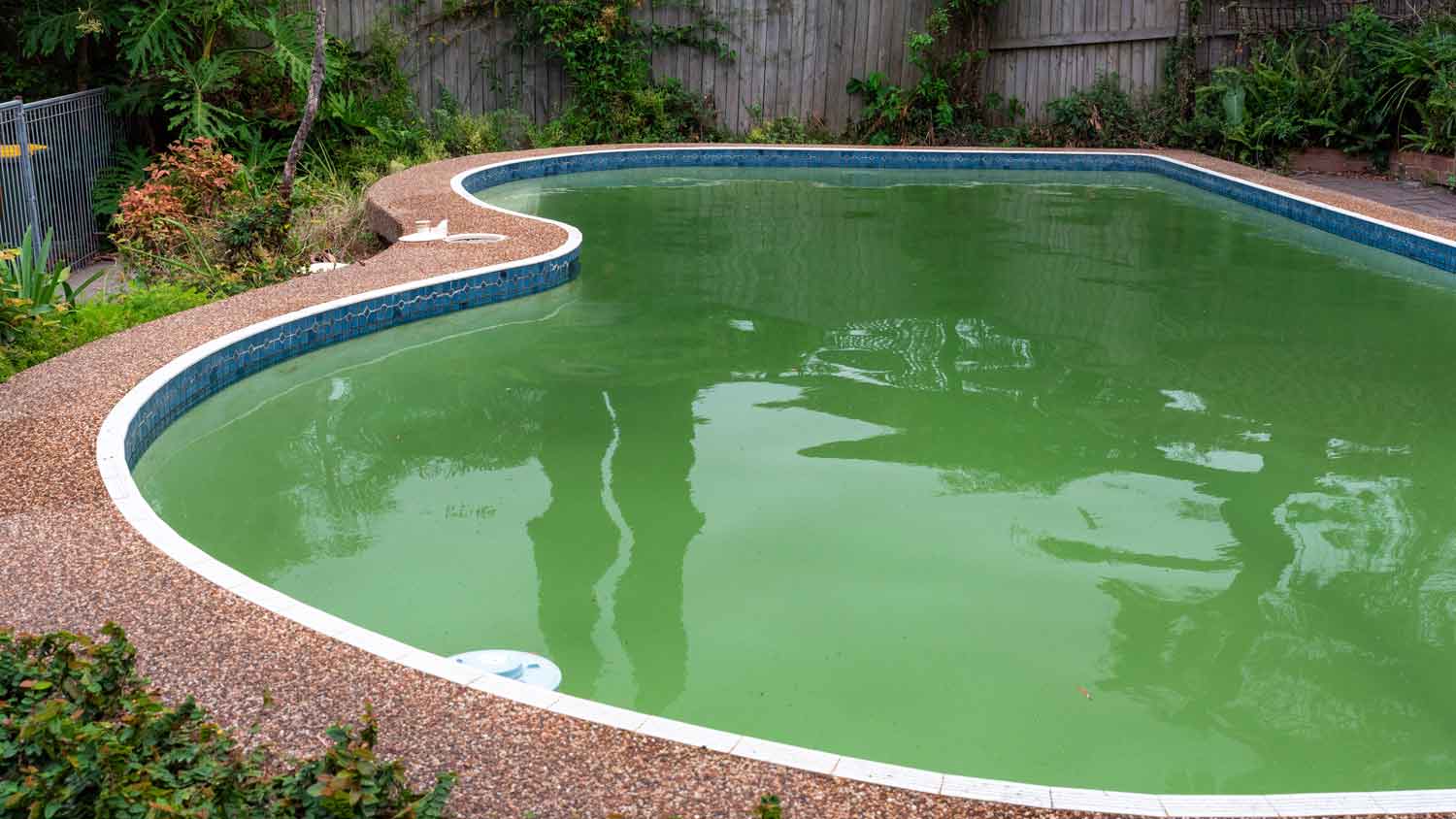
Wondering how much it costs to run a hot tub? Discover average monthly and yearly costs, key factors, and tips to keep your hot tub expenses in check.
Like a regular hot tub, but better


Saltwater hot tubs use a salt-chlorine generator to convert salt to chlorine.
These hot tubs offer better water quality for sensitive skin and are easy to maintain.
Saltwater hot tubs cost more than traditional ones, have higher electric costs, and can potentially corrode metal parts.
There’s nothing like soaking in a hot tub after a long day or an intensive workout. If you’re thinking about installing a hot tub or replacing an old one, a saltwater hot tub is an alternative to traditional chlorine setups. Review all the pros and cons of saltwater hot tubs before taking the plunge, including water quality, maintenance, costs, and more.
Saltwater hot tubs, like saltwater pools, use a salt-chlorine generator to produce chlorine from dissolved salt. The water is softer and gentler on the skin and doesn’t have an odor. While this type of hot tub costs more than its conventional counterparts, it’s easier to maintain. A hot tub installer can walk you through the differences between these tubs and chlorine options so you can make an informed decision.
| Saltwater Hot Tub | Traditional Hot Tub |
|---|---|
| A salt-chlorine generator creates chlorine | Use chlorine or bromine to sanitize the water |
| Easier to maintain | More hands-on maintenance is required |
| Refill the tub every 12 months | Refill the tub every 3–4 months |
| Higher up-front costs | Easier on the wallet |
These advantages could sway you toward saltwater hot tubs instead of chlorine spas.
While the water in both regular and saltwater hot tubs is safe as long as it’s properly tested, balanced, and maintained, saltwater hot tubs have higher-quality water. The water texture is silky and soft, and it’s more buoyant, meaning it’s easier to float in it. You won’t experience harsh chlorine odors, and contrary to myths, you won’t taste salt in the water.
Some people have or can develop a sensitivity to chlorine, which can cause rashes when chlorine levels in the water are too high. Saltwater hot tubs have salt-chlorine generators that produce only the necessary amount of chlorine, meaning the chances of an overly-chlorinated tub are low.
There are also lower amounts of chloramine in saltwater tubs—which is produced when chlorine interacts with contaminants like hair products and sweat—reducing the chances of skin irritation.
To maintain your saltwater hot tub, you’ll need to test and balance the water regularly and replace the salt cartridge every four months. Overall, it’s easier to maintain a saltwater hot tub because you don’t need as many chemicals. Depending on usage levels, you’ll need to refill your saltwater hot tub every 12 months, compared to having to refill a traditional tub every three to four months.
Assuming your current hot tub is compatible with a saltwater system, it’s straightforward to make the switch by installing a saltwater chlorine generator. To find out if your hot tub is compatible, consult the manufacturer. Also, be sure to check whether a saltwater pool or hot tub conversion voids the manufacturer’s warranty.
Now that you know all of the benefits that saltwater hot tubs have to offer, consider the downsides before making a decision.
Saltwater hot tubs cost $16,500 to $24,000, which is more than the cost of traditional hot tubs, which range between $2,000 and $11,000. Although the up-front costs are higher, regular maintenance costs are lower.
The extra equipment needed for a saltwater hot tub costs $200 to $700, but prices go up to $1,500. Keep in mind that you’ll need to replace your salt cell every three to five years, which costs $200 to $400.
Your saltwater hot tub may experience corrosion, but only if it’s improperly maintained or incompatible with a salt system. For peace of mind, you can purchase saltwater hot tubs or make sure your tub is compatible with high-quality metal components instead of inexpensive metal parts. Small details, like the heater element being titanium-coated, make all the difference in the long run.
Traditional hot tubs can be lowered to 50 degrees Fahrenheit when you know you won’t use them for six weeks or longer, but saltwater hot tubs require the temperature to be at least 60 degrees Fahrenheit. If you’re used to lowering the temps during the off-season, you might see a slightly higher electric bill for a saltwater hot tub.
If you’re unsure whether saltwater is the way to go, here are some alternatives to consider:
Hot tub with ozone generator: This is another nontraditional option that uses fewer chemicals than conventional tubs. However, ozone generators only last 3–4 years and require regular bulb or chip replacements.
Traditional hot tub: Although you won’t enjoy the benefits of a saltwater hot tub, a run-of-the-mill hot tub is a solid option as long as you stay on top of water testing, balancing, and maintenance requirements.

A saltwater hot tub could be right for you if you’d like to use fewer chemicals and have better water quality. This might be more of a need than a desire, especially if you have sensitive skin. Saltwater options also might be a good choice if you’re looking for a unit that’s simple to maintain and plan to do the work yourself. Finally, if you already have a saltwater pool, it makes the decision easier.
If you know that a saltwater hot tub is the way to go, hire a hot tub installer near you. They will help you choose the right tub for your needs, set up the saltwater system, and potentially provide maintenance services.
From average costs to expert advice, get all the answers you need to get your job done.

Wondering how much it costs to run a hot tub? Discover average monthly and yearly costs, key factors, and tips to keep your hot tub expenses in check.

Swim spa costs vary, but each unit offers the benefits of a pool and hot tub combined. Use this guide to plan your budget.

Discover how much installing a steam room costs, including average prices, key cost factors, and tips to save on your steam room installation.

Is murky pool water ruining your summer dip? Learn why your pool is cloudy and how to fix it to get back to swimming fun.

Discover the cost of whirlpool tub installation, including average prices, key cost factors, and tips to help homeowners budget for their project.

Why is my pool pump so loud? Clogs, faulty parts, low water levels, and more can cause a noisy pump. Discover why and what you can do to fix it.